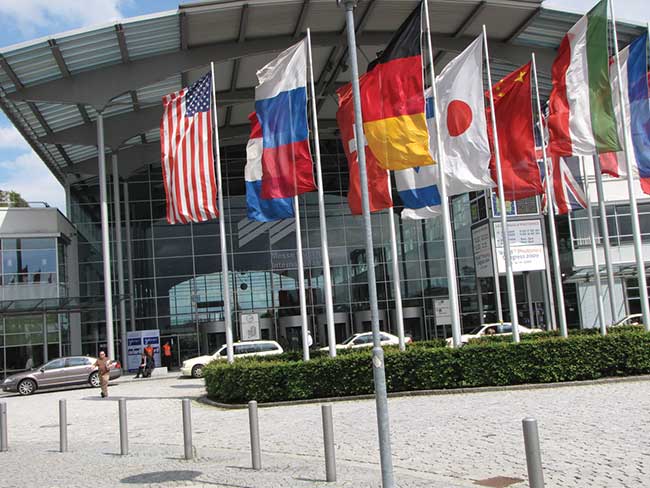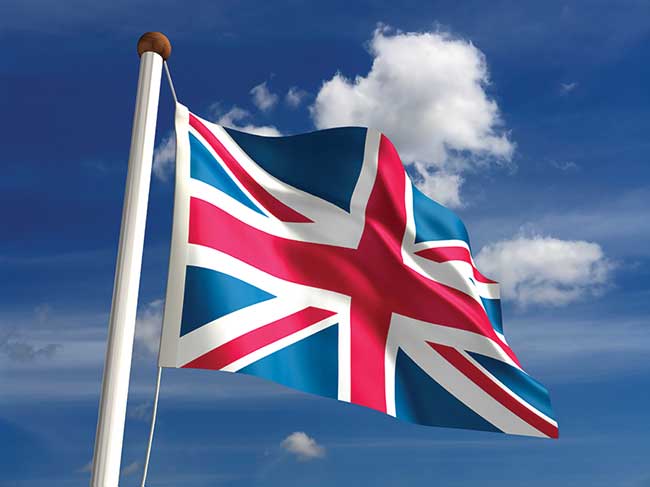While trade relations between European and Asia-Pacific nations are growing, Brexit is expected to pose challenges and potential complications for the European Union trade market. The photonics industry is actively adjusting.
Europe has been struggling with the loss of manufacturing and related trade to Asia-Pacific nations, but optimism remains for collaboration between the regions that will drive mutual growth.
“We still see that the high-tech manufacturing is in Europe, and there are good possibilities for volume production in Asia,” said Arne Leinse, project/account manager and vice president at LioniX BV in the Netherlands.
 As trade relations between European countries and the APAC region grow, Basil Garabet, CEO of NKT Photonics, noted that companies industrywide (and globally) are adjusting to the changing market and global trade situation.
As trade relations between European countries and the APAC region grow, Basil Garabet, CEO of NKT Photonics, noted that companies industrywide (and globally) are adjusting to the changing market and global trade situation.
“We’re not in a ‘wait and see’ position,” he said. “We’re all still actively looking at acquisitions and trade growth [to strengthen companies].”
In the U.K, the photonics industry exports more of its output than other manufacturer, between 75 and 95 percent of production compared to a manufacturing average of only 34 percent. In fact, the Photonics Leadership Group noted that “photonics exports are the fourth largest by value of any U.K. manufacturing sector,” behind automotive, aerospace and machinery.
Trade development
Although the World Trade Organization (WTO) expects that the demand for imported goods in general in developing Asian economies will increase within the next several years, the progression is (and has been) slow. World trade of goods grew by just 1.7 percent in 2016; 2.8 percent growth was anticipated. Global gross domestic product (GDP) grew by just 2.2 percent. For 2017, trade could grow anywhere between 1.8 percent and 3.1 percent.
“Trade is still registering positive growth, albeit at a disappointing rate,” said WTO Director-General Roberto Azevêdo, adding that this presents economic challenges, as the value of global trade has fallen because of shifting exchange rates and drops in commodity prices.
The EU has widespread trade ties to the Asia-Pacific region — namely Japan, which has become its second largest partner behind China — and each remains a very important market for the other, according to the EU.
Both import and export trade between Europe and Japan has been dominated by the optical instruments sector, among others.
Import and export of goods of all kinds by China has seen growth in recent years, according to a report by the National Bureau of Statistics of China.
The EU, in its own recent report, named China and Japan among its top 10 overall trade partners; specifically, the three main partners in EU exports in 2015 were China, Switzerland and the U.S. In import trade, China still holds the top slot. The EU is China’s biggest trading partner, according to the European Parliament, while China is the EU’s second largest trading partner, after the U.S.
“The interest in trade relations with China has never been higher,” said Charles Comey, a mergers and acquisitions and corporate finance partner with Morrison Foerster, citing record investments in China throughout 2016.
LioniX BV’s Leinse said Korea is another area to watch.
“Korea and China are very active markets,” he said. “In the last [several] years, we have seen in particular the Asian market become more and more important, and the amount of customers from that part of the world is really increasing.”
Overall, Europe remains a major player in APAC trade relations, said Bob Flanagan, a managing director for Raymond James Financial Services, as China’s cross-border mergers and acquisitions have been rising. Outbound activity from China has vastly outweighed inbound activity in recent years, with the pace of inbound deals decreasing in 2016.
In Australia and New Zealand, trade relations with Europe are strong. Australia, in particular, is “an important economic and trading partner for the European Union,” according to the European Parliament. Relations with New Zealand are growing, too, as it and Europe continue negotiations on Free Trade Agreements (FTA).
Strategic alliances
Partnerships among European and Asia-Pacific nations are crucial to the global economy and economic development. Alliances can also strengthen trade relations not only on a global scale, but among the many different regions, as well.
The South Asian Association for Regional Cooperation (SAARC) — an intergovernmental organization that encompasses Afghanistan, Bangladesh, Bhutan, India, the Maldives, Nepal, Pakistan and Sri Lanka — works closely with the EU; the partnership covers financial and technical aid between the regions, in addition to economic cooperation. The EU is SAARC’s top trading partner, according to the European Parliament, as it holds a 15 percent share of SAARC’s overall trade with the world.
India has become another strong EU strategic partner; the European Parliament notes that over the past several years, bilateral trade between the two has doubled, and investments have grown tenfold, making the EU India’s top trading partner. European trade with Pakistan has grown, as well — the EU is now Pakistan’s second largest trading partner.
A strategic partner of the EU since 2003, Japan has been looking to further stimulate trade and economic growth between the two regions through cooperation with the EU on regional and global challenges, as well as development of an FTA.
The development and changing of “mega alliances” are expected to shape trade relations between Asia and Europe at least into 2017, according to Container Shipping & Trade magazine. For example, one such affiliation, THE Alliance, comprises several major international transport companies — among them, Germany’s Hapag-Lloyd, as well as Kawasaki Kisen Kaisha and Mitsui O.S.K. Lines, both based in Japan. Asia-Europe trade has experienced challenges in relation to the actual shipping of goods, including business mergers and, at one point, an excess of supply over demand. But experts now are optimistic that expanding alliances will, in turn, strengthen trade.
“There will be opportunities and challenges in every market across 2017 as alliances are changing,” said Ruben Emir Gnanalingam, chief executive of Malaysia-based Westports Holdings.
Questions Surround Impact of Brexit on Global Trade
As Britain withdraws from the European Union (EU), the impact on global trade, manufacturing and finance remains to be seen. Still, response from key players is running the gamut of predictions.
Officials with England’s HM Treasury have made a case for remaining in the organization, notably in relation to the effects of global trade both domestically and abroad. In a 2016 report, courtesy of the HM Treasury, administrators agreed that leaving the EU could be detrimental to the U.K.’s trade partnerships with other regions.
 “Membership of the EU has made it easier to trade both with the EU and the wider world,” according to the report. “Trade as a share of national income has risen to over 60 percent in the past decade, compared to under 30 percent in the years before the U.K. joined the EU.”
“Membership of the EU has made it easier to trade both with the EU and the wider world,” according to the report. “Trade as a share of national income has risen to over 60 percent in the past decade, compared to under 30 percent in the years before the U.K. joined the EU.”
Across the Channel, “big question marks” exist with German companies in the wake of Brexit, said David Santorum, project manager of foreign trade and export promotion at German industry association Spectaris. In particular, companies could potentially pay higher taxes on products and other services. He noted that while Brexit may not necessarily make the U.K. attractive for trade, it “doesn’t mean trade will finish. It’s still going. It’s still an interesting market for investments.”
Basil Garabet, CEO of the Photonics Group at NKT Photonics, said that mergers and acquisitions are increasing among companies throughout the EU. They are “adjusting to the situation.”
This is a trend that Jose Pozo, director of technology and innovation at EPIC (the European Photonics Industry Consortium), is also seeing.
The EU as a whole is fighting the loss of manufacturing, as well — namely of OLEDs and displays — to Asia-Pacific regions, according to Pozo. EPIC is among those working with the EU to make sure volume production of photonic devices stays in Europe, and ultimately becomes automated for more efficiency and productivity.
“We all want to keep as much manufacturing in Europe as possible,” Pozo said.
Some have expressed concern over potential cuts in EU funding as a result of Britain’s withdrawal from the group, but Pozo said that most companies he’s talked with about the impending exit are optimistic that such cuts won’t happen. In fact, he has found that while the impacts of Brexit are largely unknown at this point, the majority of photonics-related companies in the EU do not anticipate much change. Carlos Lee, director general of EPIC, attributed this confidence to the fact that photonics companies are already structured to operate more widely in international markets.
Any impacts caused by Brexit will not be felt for at least another several years, according to John Lincoln, chief executive at the U.K. Photonics Leadership Group, in a piece courtesy of OSA’s Optics and Photonics journal, given the lengthy process involved with leaving the EU.